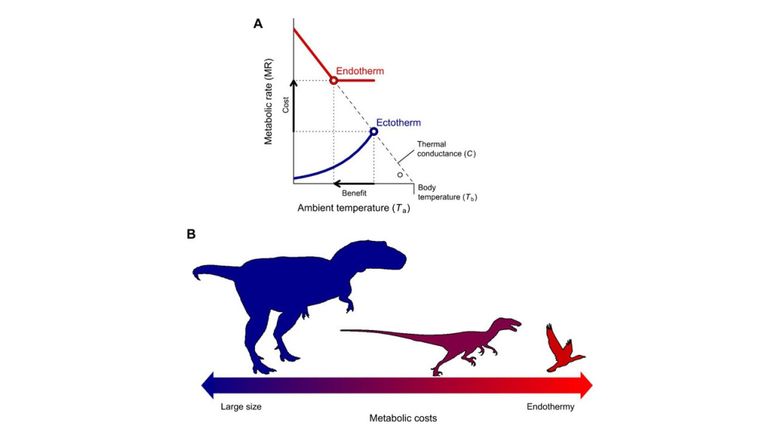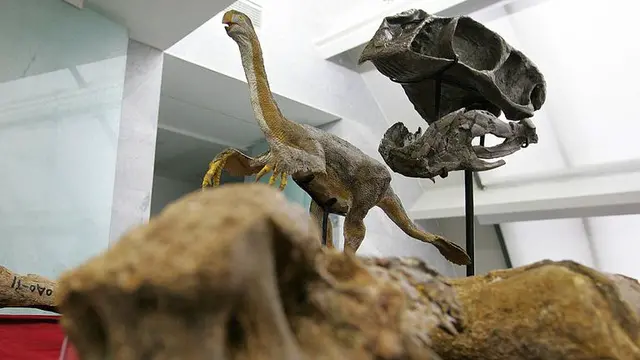As dinosaurs evolved into birds they shrank in order to become warm blooded, according to a new theory hoping to put to bed one of the remaining controversies in evolutionary theory.
Reptiles are cold blooded, or ectothermic, which means they aren't capable of controlling their own body temperature.
Mammals and birds, which are directly descended from a group of dinosaurs called theropods, are warm blooded, or endothermic, meaning they produce their own body temperature.
Dr Enrico Rezende and a team of researchers at the Centre of Applied Ecology and Sustainability, alongside the Institute of Environmental and Evolutionary Sciences in Chile, came up with the new theory by analysing theropod body size data.
"The evolution of endothermy in birds and mammals is an important transition during vertebrate evolution," Dr Rezende said.
But there is no fossil record for it, and archaeologists have struggled to provide evidence to support their theories.
To propose a new theory, the scientists asked two questions: What is the evolutionary benefit of becoming endothermic, and what conditions would have allowed theropods to evolve endothermy?
During the evolution of birds, the scientists observed two specific trends - that theropods became smaller and smaller over the course of millions of years, and that they became increasingly capable of generating their own heat.
Generating your own heat is an expensive lifestyle for animals and requires a lot more energy consumption.
However, it provides benefits as it allows animals to function at a higher level when there aren't any external heat sources nearby, such as during the night or winter.

Image: The evolution of endothermy. Pic: Science Advances
The team found that the shrinking was key to allowing the species to develop the ability to generate their own hear because it reduced the amount of energy they needed to keep warm.
They suggest that dinosaurs' metabolism would have increased as the dinosaurs shrank during the Early-Middle Jurassic period, approximately 180 to 170 million years ago.
The model suggests that the energy the animals saved by shrinking were then used to help them become endothermic.
 简体中文
简体中文

